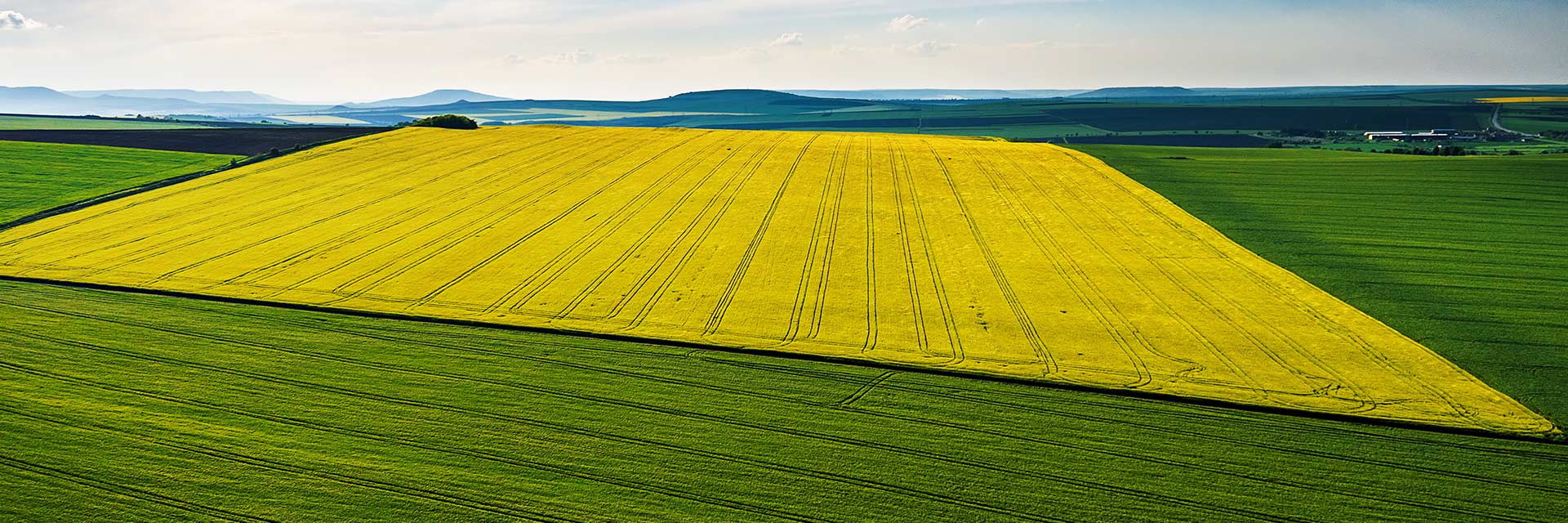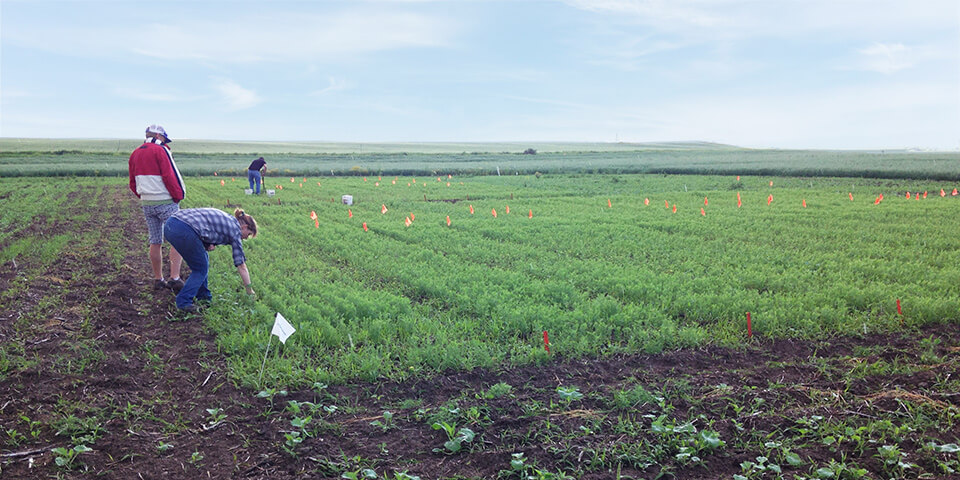
Why is crop rotation considered a good agricultural practice?
- Increase Soil Fertility
- Get Better Nitrogen Use
- Improve Soil Structure
- Prevent Soil Erosion
- Increase Crop Yields

Why is crop rotation considered a good agricultural practice?
In Western Canada, "1/3 of all of our acres see canola maybe once every three years, or in a lot of cases once every two years, our [natural mycorrhizal] populations here have been depleted. And so, to have an opportunity to actually reintroduce that, reinoculate our soil with that organism, it gives us a chance for all these other crops that we grow to regain that value, that benefit to pull the nutrients and water, allowing them to be healthy and strong, and reach their genetic potential", mentions Craig Davidson, from Taurus Agricultural Marketing.
Watch the complete interview with Craig explaining canola rotation impact on plants and soil biology in Western Canada:
In addition, discover in this article why crop rotation is important, and why adding the beneficial mycorrhizal inoculant is one of the key solutions!
Soil is fertile when it provides all the favorable conditions for plant growth. One of these conditions is the balanced intake of nutrients. When the same crop is grown each year in a field, the soil runs out of essential nutrients for this crop type. Since each crop doesn’t have the same nutrient requirements, the crop rotation allows the uptake of the various nutrients from year to year depending on the crop.
Each plant has its microbiological preferences (living organisms in the soil), so crop rotation allows better diversity of the microflora. On their side, mycorrhizae, with their hyphae, will provide carbohydrates (sugars) to beneficial soil microbes. In other words, mycorrhizae will deliver sunlight energy packaged as liquid carbon to a vast array of soil microbes involved in plant nutrition and disease suppression.1
Incorporating a legume crop inside the rotation will improve the non-fertilizing nitrogen supply through its symbiosis with rhizobium-type bacteria. In addition, pea crops will put back a portion of nutrients, including nitrogen, in the soil for the next crop grown in the rotation.
"Pulses or legumes can fix up to 80 percent of the nitrogen they need from the air, which reduces the amount of nitrogen removed from the soil. […] Pulse or legume residue has a significant amount of nitrogen in it, which then will become available to future crops as it decomposes." 2
A good soil structure (arrangement of soil particles in various aggregates differing in shape, size, stability, and degree of adhesion to one another) is important for water and air infiltration and erosion control. Growing different species of plants in a rotation, which have different root systems, some deep, some very subdivided (many secondary and tertiary networks), allows to have a soil that has been shaped in different ways, and therefore allow better water penetration.
Adding mycorrhizae will clearly improve soil quality by building a better soil structure. Knowing that 40 to 50% of the soil is made of pores (holes), it’s great to know that mycorrhizal hyphae will create a path through this soil, and thus increase water infiltration. By allowing better interconnections between the soil pores, the micro-channels (tunnels) created by the mycorrhizal hyphae will also delay the formation of a water layer on the soil surface.
Listen to Adam Smith, from Taurus Agricultural Marketing, sharing his top solution when doing crop rotation:
The combined effect of the four reasons above tend to show that crops will see an increase in yield with crop rotation, and why it is considered good agricultural practice. With that being said, concrete data are always the best to confirm the theory.
Manitoba Agriculture published in 2018 a complete and very informative table in The Manitoba Co-operator showing the Yield response of Manitoba crops sown on large fields of various previous crops (stubble) in rotation 3
AGTIV® inoculants help crops to nodulate efficiently in the season, improving crop health and yield. Consult our Efficacy Report for all details and third-party reports.
Increasing soil fertility, better nitrogen use, improving soil structure and preventing soil erosion, so many reasons why AGTIV® mycorrhizal inoculant should be added to your crop rotation farming practices.
Helpful tools:
Sources:
1 Jones, C. E. 2014. Nitrogen: the double-edge sword. Amazing Carbon. pp. 8.
2 Phelps, S. 2017. Crop rotations: 8 things to consider. https://www.topcropmanager.com/crop-rotation-considerations-11370/
3 Kubinec Anastasia, Manitoba Agriculture. 2018. Building a ‘better’ crop rotation Understand all the interactions within a rotation and their effect on yield. The Manitoba Co-operator. https://masc.mb.ca/masc.nsf/mmpp_crop_rotations_2010_2016.pdf

With the arrival of spring, farmers everywhere are gearing up for another season of growth and abundance. And here at AGTIV®, we're thrilled to be your partner in planting success!

Find out how Premier Tech has been able to implement the investments, the infrastructure and partnerships needed to develop mycorrhizal fungi and other natural active ingredients.